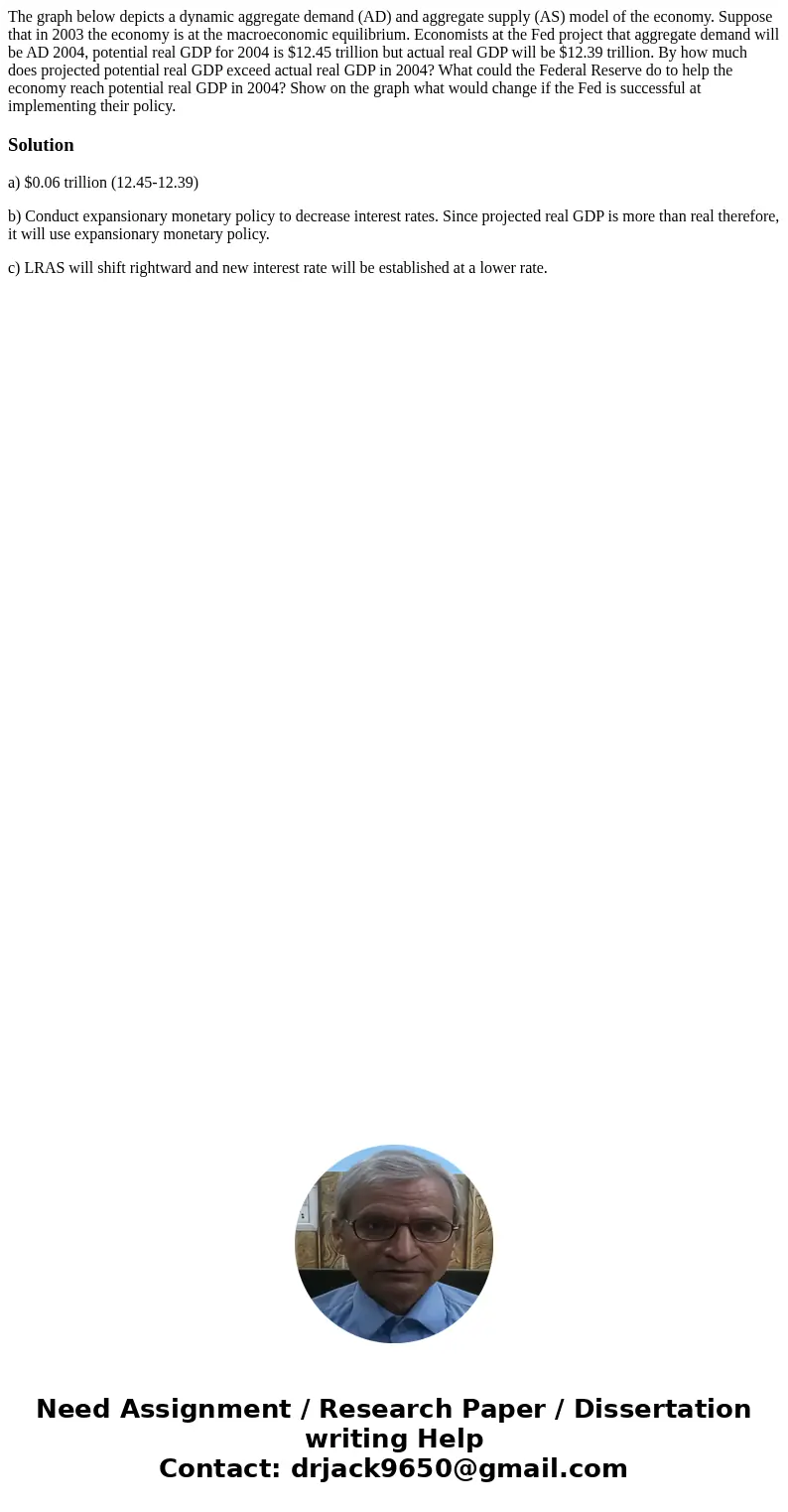The graph below depicts a dynamic aggregate demand AD and ag
The graph below depicts a dynamic aggregate demand (AD) and aggregate supply (AS) model of the economy. Suppose that in 2003 the economy is at the macroeconomic equilibrium. Economists at the Fed project that aggregate demand will be AD 2004, potential real GDP for 2004 is $12.45 trillion but actual real GDP will be $12.39 trillion. By how much does projected potential real GDP exceed actual real GDP in 2004? What could the Federal Reserve do to help the economy reach potential real GDP in 2004? Show on the graph what would change if the Fed is successful at implementing their policy.
Solution
a) $0.06 trillion (12.45-12.39)
b) Conduct expansionary monetary policy to decrease interest rates. Since projected real GDP is more than real therefore, it will use expansionary monetary policy.
c) LRAS will shift rightward and new interest rate will be established at a lower rate.

 Homework Sourse
Homework Sourse